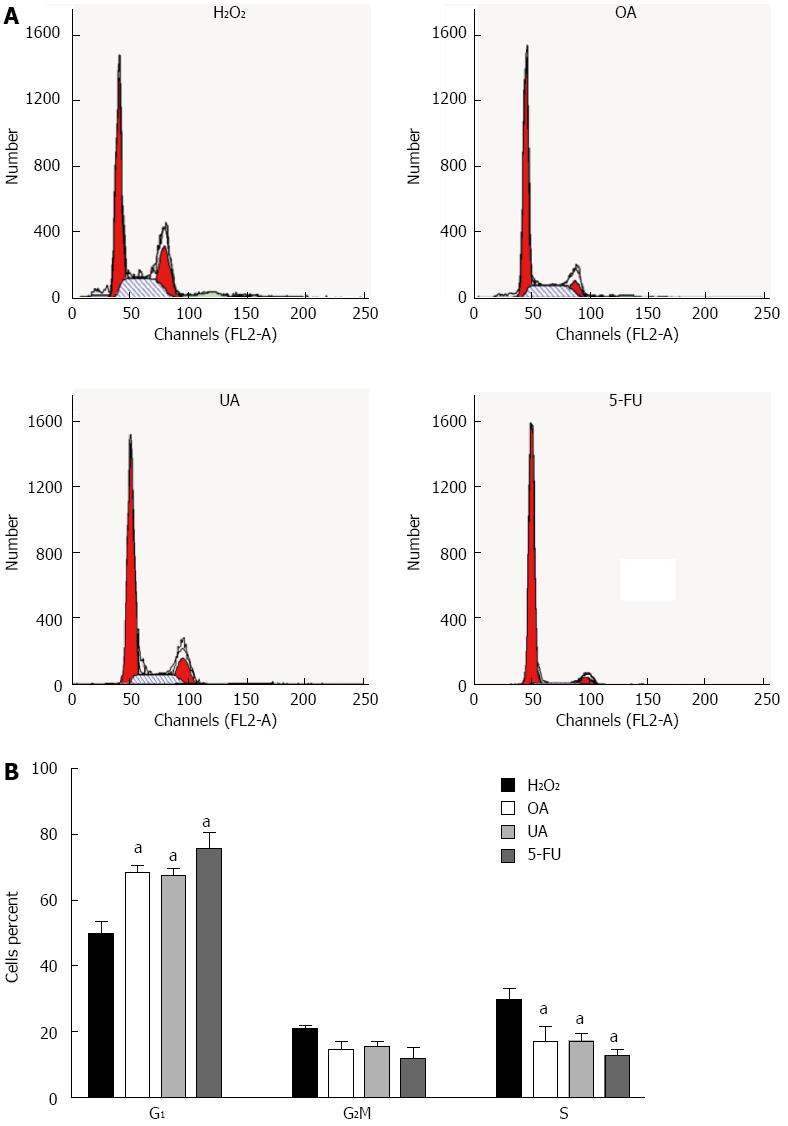Copyright
©2014 Baishideng Publishing Group Co.
World J Gastroenterol. Feb 7, 2014; 20(5): 1348-1356
Published online Feb 7, 2014. doi: 10.3748/wjg.v20.i5.1348
Published online Feb 7, 2014. doi: 10.3748/wjg.v20.i5.1348
Figure 4 Growth inhibitory effects of oleanolic acid and ursolic acid on H2O2-treated WB-F344 cells.
A: Flow cytometric analyses of the cell cycle of H2O2-treated WB-F344 cells following treatment with oleanolic acid (OA) (4 μmol/L), ursolic acid (UA) (8 μmol/L) or 5-FU (0.05 mmol/L, positive control). After 72 h, the cells were harvested and stained with 10 μg/mL propidium iodide (PI), and the DNA content was analyzed, as described in the Materials and Methods; B: Cell cycle quantitative analysis. Histograms indicating the fraction of H2O2-treated WB-F344 cells and those that were treated with OA, UA or 5-FU in the G1, G2/M and S phases. The data represent the means ± SD derived from three independent experiments. aP < 0.05 vs H2O2 model group.
- Citation: Han YY, Xue XW, Shi ZM, Wang PY, Wu XR, Wang XJ. Oleanolic acid and ursolic acid inhibit proliferation in transformed rat hepatic oval cells. World J Gastroenterol 2014; 20(5): 1348-1356
- URL: https://www.wjgnet.com/1007-9327/full/v20/i5/1348.htm
- DOI: https://dx.doi.org/10.3748/wjg.v20.i5.1348









